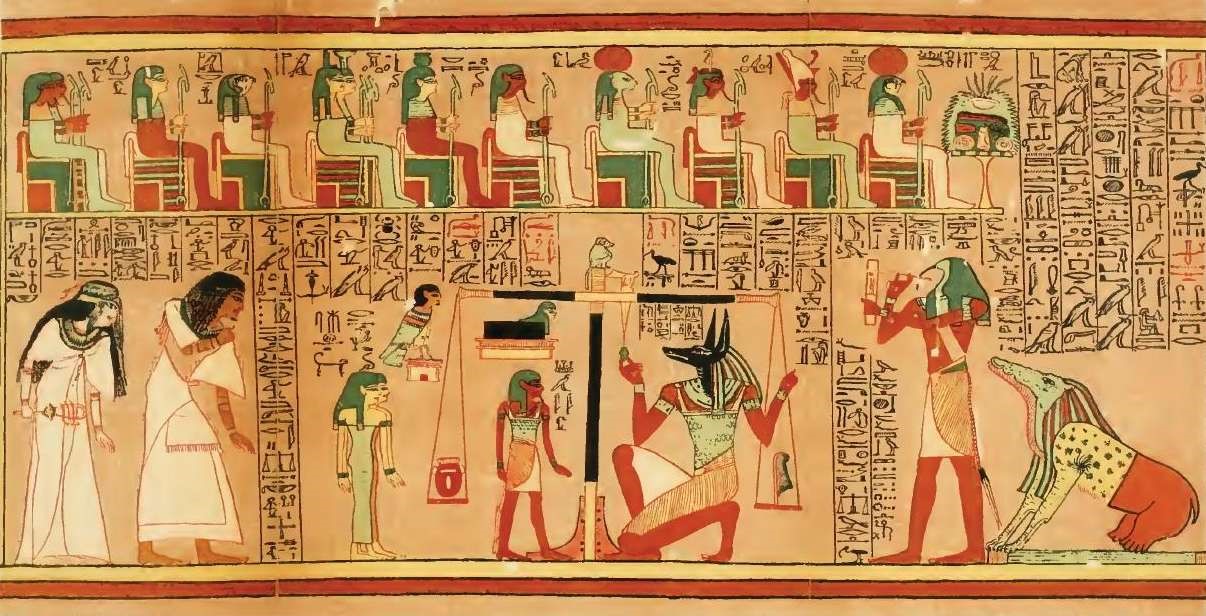Esse dicionário foi criado para auxiliar o estudo do Tarot Egípcio da Ed. Kier por Marianita Vieira
Referências
Armour, R. A. (1989). Gods and Myths of Ancient Egypt. Cairo, Egypt: The American University in Cairo Press.
Armour, R. A. (1999). Gods and Myths of Ancient Egypt. Cairo, Egypt: American University in Cairo Press.
Brier, E. D. (Director). (2014). AKHENATON: The Rebel Pharaoh (ANCIENT EGYPT HISTORY DOCUMENTARY) [Motion Picture]. Retrieved from https://www.youtube.com/watch?v=hPlHwTXi7tk
Britannica, E. (2015, 10 28). Sphinx. (E. B. Inc., Editor) Retrieved from Encyclopædia Britannica Online.
Budge, E. A. (1899). A Magia Egípcia. (O. M. Cajado, Trans.) Routledge & Kegan Paul.
Budge, W. (1993). Jeroglificos egipcios. In W. Budge. Barcelona: Editorial Humanitas.
Budge, W. E. (1990). Jeroglificos Egipcios. Barcelona: Editorial Humanitas.
Bunson, M. R. (2002). Encyclopedia of Ancient Egypt, Revised Edition. New York: Facts on File.
Cirlot, J.-E. (1984). Dicionário de símbolos. (R. E. Frias, Trans.) Barcelona: Editorial Labor, S.A. Calabria.
Clark, T. R. (n.d.). Símbolos e Mitos do antigo egito. Hemus Editora Ltda.
David, R. a. (1992). A biographical dictionary of Ancient Egypt. London: B A Seaby.
Deurer. (2010). Symbles and Definitions.
Dodson, D. A. (2011, 02 17). The Great Pyramid: Gateway to Eternity. Retrieved 10 17, 2014, from http://www.bbc.co.uk/history/ancient/egyptians/gateway_eternity_01.shtml
dornsife, D. a. (n.d.). What is a king to do: an investigation of images of kingship, historical content. Retrieved from USC Dornsife: https://dornsife.usc.edu/what-is-a-king-to-do/historical-context/
Edmundson, M. (2007, 09 09). Defender of Faith? The New York Times Magazine.
egypt, P.-a. a. (n.d.). Per-ankh ancient egypt. Retrieved from Per-ankh ancient egypt: http://www.per-ankh.co.uk/monuments_of_egypt/gods_and_goddesses/hapi_-_god_of_the_nile_inundation.asp
Eyptian Myths.net. (1997-2014).
- J. Ruhli, S. I. (2013). Purported medical diagnoses of Pharao Tutankhamun, c. 1325 BC.
Freud, S. (1937). Moses and Monotheism. Vintage The Hogarth Press and the Institute of Psycho-analysis. Retrieved from https://blogs.commons.georgetown.edu/orientalism-spring2011/files/Moses-and-Monotheism0001.pdf
Hamlyn, P. (n.d.). Egyptian Mythology.
Hamzelou, J. (2012, September 5). Tutankhamun’s Death and the Birth of Monotheism. Retrieved 08 27, 2015, from newscientist.com: https://www.newscientist.com/article/mg21528812-400-tutankhamuns-death-and-the-birth-of-monotheism/
Hart, G. (2005). The Routledge Dictionary of Egyptian Gods an Goddesses. New York: Routledge.
Hawass, Z. (2010, September). King Tut’s Family Secrets. Retrieved from National Geographic Magazine: http://ngm.nationalgeographic.com/print/2010/09/tut-dna/hawass-text
Hemus. (1984). O Livro dos Mortos do Antigo Egito. São Paulo: Hemus Editora.
Hill, J. (2010). Heka. Retrieved from ancientegyptonline: http://www.ancientegyptonline.co.uk/heka.html
Hill, J. (2010). Satet. Retrieved from Ancient Egypt Online: http://www.ancientegyptonline.co.uk/satet.html
Hill, J. (2010). The Exus. Retrieved 2015, from AncientEgyptOnline.co.uk: http://www.ancientegyptonline.co.uk/exodus.html
Hill, J. (2015). Nut. Retrieved from Ancient Egypt Online: http://www.ancientegyptonline.co.uk/nut.html
Janeiro, J. I. (1979). La Caballa de Prediccion. Editorial Kier.
Kaplan, S. R. (1984). Egipcios Kier Tarot. Stamford, CT: U.S. Games Systems, Inc.
Khonsu – Deus egípcio | Egito Antigo. (n.d.). Retrieved 1 7, 2015, from www.antigoegito.net: http://www.egitoantigo.net/khonsu-deus-egipcio-associado-a-lua.html
Kligin, S. (2013, may 15). 7 estatísticas importantes sobre o consumidor brasileiro. Brasil Link.
LLC, T. (2015). Anuket. Retrieved from An encyclopedia of egyptian mythology: https://cowofgold.wikispaces.com/Anuket
Mella, F. A. (1977). Egito dos Faraós. Milano, Italy: Hemus Editora Limitada.
Milk way mithology- the origin of the creation stories. (n.d.). Retrieved from http://www.native-science.net/Common_Creation_Stories.htm
Morel, H. V., & Moral, J. D. (1987). Diccionario de mitologia egipcia y de medio oriente. Buenos Aires, Argentina: Editorial Kier, S. A.
Neferuhethert. (1999-2007). Retrieved 2014, from http://www.hethert.org/seven_hathors.htm
Neubert, O. (1962). O Vale dos Reis. Belo Horizonte, Minas Gerais: Itatiaia Limitada.
Nut, Nuit. (n.d.). Retrieved 2016, from Crystal Links: http://www.crystalinks.com/nut.html
Pharaoh Akhenaten. (n.d.). Retrieved 2015, from crystalinks.com: http://www.crystalinks.com/akhenaten.html
Shorter, A. W. (1993). Os Deuses Egípcios. São Paulo: Cultrix.
Sing, C. (1989?). Nefertiti e os Mistérios sagrados do Egito. Livraria Freitas Bastos.
The Egyptian Soul: the ka, the ba, and the akh. (n.d.). Retrieved 10 17, 2014, from MORTUARY PRACTICES OF ANCIENT EGYPT.
Watson, J. (2011). The Beautiful Feast of the Opet (the Opet Festival ) – Part 1 an introcuction. Retrieved from tour egypt: http://www.touregypt.net/featurestories/opetfestival1.htm
Wells, R. A. (1992). The Mythology of Nut and the Birth of Ra. Helmut Buske Verlag GmbH.
Winston, A. (n.d.). The Meaning of the Great Sphinxs of Giza. Retrieved 2015, from touregypt.net: http://www.touregypt.net/featurestories/sphinx4.htm


